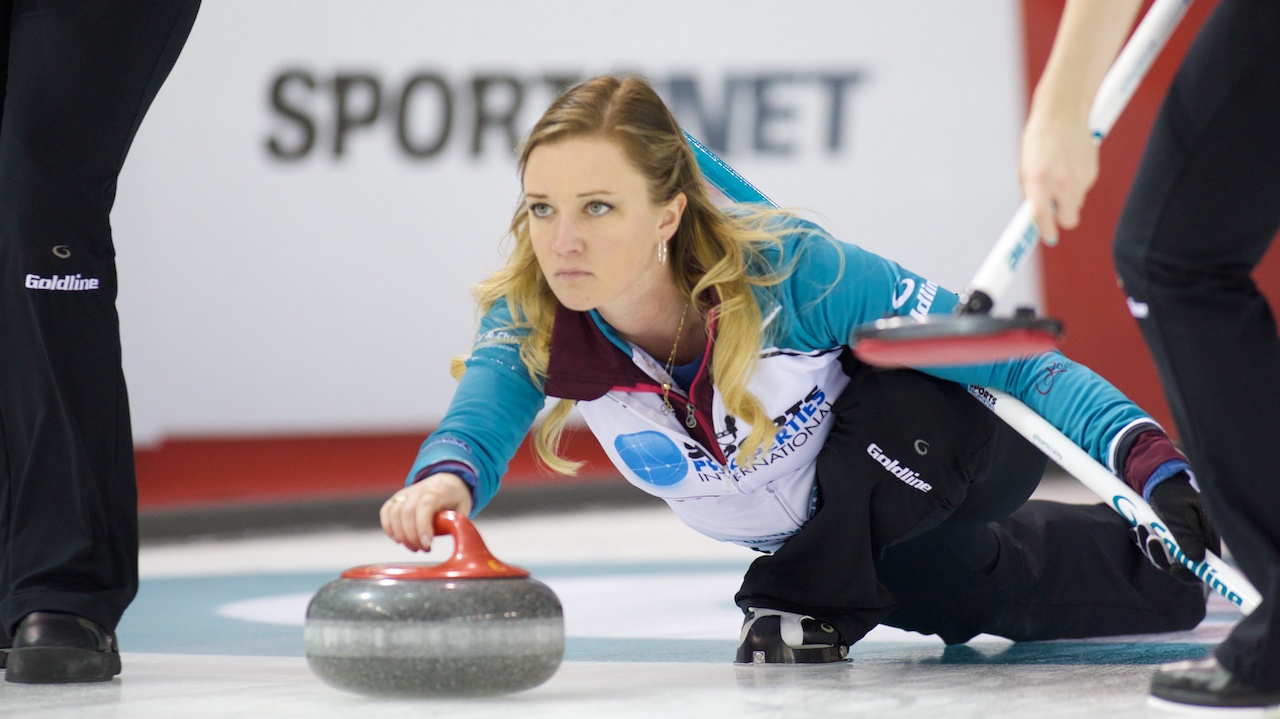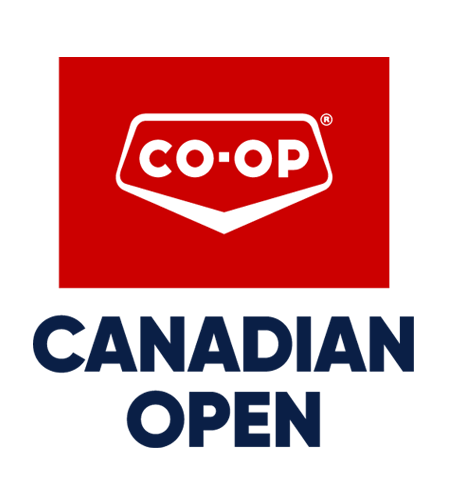Chelsea Carey: Bigger, better Canadian Open awaits
By Chelsea Carey
I was sitting in the Sportsnet Players’ Summit in July 2014, and the group was discussing what could be done to improve the Pinty’s Grand Slam of Curling series.
First of all, kudos to Sportsnet for hosting this event in the first place. Their interest in the players’ opinions and input is unparalleled, and I can’t express how much we appreciate that.
The whole experience was actually quite fascinating. The room was filled with not only Sportsnet brass, but Olympic gold medallists (Marc Kennedy, Kaitlyn Lawes, Jennifer Jones, E.J. Harnden, Kevin Martin, and Brad Gushue), an endless number of Canadian and world champions, and of course countless Grand Slam titles amongst the group. I was humbled to be there (largely because the only one of those I can claim ownership of is one Grand Slam title!). The part that I found particularly fascinating is that, despite the friendships between the players, there hasn’t ever really been an opportunity (that I’ve been a part of, anyway) for us to all sit down together and discuss our thoughts on certain aspects of the Grand Slam series and of curling’s future in general. It was a great learning experience for me personally, as many of the players presented viewpoints that I had not previously considered.
One thing that everyone agreed on was the need to give each Grand Slam event it’s own identity. Currently, even as players in the events, we tend to not distinguish them. We’ll say “I’m curling at the Slam in Selkirk”, rather than “I’m curling in the Masters Slam this weekend”, and that needs to change.
Comparisons were drawn to golf and tennis, where the “majors” each have a very clear and distinct uniqueness. The bad news for curling is that, in these other sports, the identity of each major is largely defined by the setting. For example, in tennis they are played on different surfaces (grass, clay, etc.). In golf, some are set venues (i.e. the Masters at Augusta), but even if not they have distinguishing features –- the Open Championship being played on a links-style golf course with terrible fescue rough, for example.
In curling, we do not have this as an option — an arena is an arena, and it tends to look identical no matter where you go. So using the facility or location to set apart the events was out. How else could we do it?
My thought was to use the colour schemes already assigned to each event. Doesn’t everyone remember the crazy turquoise carpets of the curling venue at the Sochi 2014 Olympics? Of course we do, because it was so different. At the Brier, the carpet is blue. At the Scotties, it is red. In general, it tends to be blue at any curling event. So why not tie it in? The Masters is teal, the National purple, and the Canadian Open red, for example. So what was done this year is matching the colour of the rings to the event colour, which is very effective, as well as the advertising and branding of the event being tied in directly to the colour of that Slam. Moving forward, this could go further, but we are on the right track here.
Another suggestion that was generally agreed upon was changing the format of the bonspiel. The Masters was 15 men’s teams and 15 women’s teams, each divided into three pools of five. The National is a men’s only Slam, that was also a pools format, but was 18 teams in total, divided into three pools of six. I don’t recall who suggested it, but one of us mentioned a triple-knockout as an option. We readily acknowledged, however, that the challenge this presents to Sportsnet is that they are not guaranteed certain matchups for television at certain times. To our surprise, this did not faze them at all, and so on we went with the triple-knockout as one of our formats. The natural fit for this style of bonspiel was the Canadian Open — if for no other reason than the “Open” in its name.
In the history of the World Curling Tour and all its iterations, triple knockout would have been, by far, the most common format throughout the years. For anyone unfamiliar with it, basically what it means is you get three losses before you’re eliminated, so there’s an A-side, B-side, and C-side, each of which have a number of qualifiers for the playoff round. The best of all triple knockout draws is a 16-team triple, in which the basic premise is to win three games before you lose lose games. That’s what the Canadian Open’s format is, and I personally love it.
In the old days, and to this current day in a couple of women’s events that are considered Slams (though not affiliated with Sportsnet), the generally accepted format would be a 32-team triple knockout. This is a large, intimidating draw, but it tends to work quite well.
Round robin as a format in any event besides the Canadian championships (Brier and Scotties) is a fairly new development. Even 10-15 years ago, this was very rare. When my Dad was winning in the 90s, they were almost exclusively triple knockout events. He used to regale me with tales of different types of teams in a triple knockout bonspiel. There was the A-side or bust team — if they didn’t qualify undefeated, they did not qualify at all. My previous Manitoba-based team was one of these at the start of our journey together, but spent significant time and effort learning how to add the other qualifying roads to our repertoire (avoid doing so at your own peril — any team hoping to be in contention in the long run needs to be able to qualify all ways). Then there were teams who were notorious for needing their backs against the wall before they really started to play well, and therefore would qualify C-side almost without exception. A prime example of this type of team was vintage Kerry Burtnyk of Winnipeg, known for his very aggressive style of play, and slow starts but extremely strong finishes in cash spiels.
For me personally, the B-side has almost never been my preferred route — my previous teams tended to be A- or C-qualifiers. However, with my new Edmonton-based team, our two playoff runs in triple knockout events have both involved B-side qualifications, so I am quite enthused about adding a previously unexplored road to the playoffs to my resume.
Having played many of the women’s WCT events in my life in the triple knockout format, I have extensive memories, both good and bad, of this style of event. By far my best memory is my aforementioned Grand Slam title. We won the now-defunct Manitoba Lotteries Grand Slam in 2010 (prior to Sportsnet’s involvement) at our home club, the Fort Rouge Curling Club in Winnipeg. We were relative unknowns at the time — we had just added Kristy McDonald (operating under her maiden name, Jenion, at the time), and had yet to prove ourselves as a force on the tour. In this event, we ran the table on the A-side, and qualified with a win over soon-to-be-Canadian champion Amber Holland in the A-qualifier. One of the unique features about a triple knockout is that the A-side qualifiers generally have all day off before the playoff day, and this was the reality for us that year. We had qualified A-side a few times, and had never done a particularly good job of managing that down time. My Dad (our coach) suggested that we set up a practice on our day off, and then stay to watch some of the other qualifying games to keep in touch with the ice, teams, and realities of the event. Turns out it worked, and on Monday we rattled off wins against Kelly Scott, Stefanie Lawton, and finally Cathy Overton-Clapham in the final.
There are many differences in philosophy going into a triple knockout event as compared to a round robin event, but perhaps none more important than the planning of your days, breaks, and games. My favourite part about round robins is that you know exactly when all your draws are, barring a tiebreaker. This is lovely from a planning perspective, as there are no surprises. However, in a triple knockout, this is not the case. Your draw times are determined by your wins and losses in the previous draw, so you could go from having a 24-hour break if you win a game to heading right back onto the ice for a back-to-back draw if you lose.
My personal experience has been that the biggest key to success in any draw is not to look too far ahead and get caught up in “what if” scenarios. It’s very easy to look at the draw and say “Well now, if we lose and so-and-so loses, we have to play them in the B-side, that’s so unfair!” or “We’ve won one more game than Team X and if we lose, we drop to the same spot, that sucks!”. None of this is even remotely productive — quite the opposite, in fact. The best strategy is to look at nothing further than the next game, and treat your opponent with either “Octopus Theory” as my team calls it (eight arms and eight legs), or “Paper Bag Theory” as my Dad has always preached to me — it doesn’t matter who you’re playing or what time the draw is or what either of your records coming in are, you just have to go out and play your game, control what you can control, and hope for the best.
We couldn’t be more excited to be a part of the first women’s field ever assembled at a Canadian Open. I can’t say enough about Sportsnet, and what their involvement and the television exposure have done for curling. This is invaluable to all teams and their individual sponsors, without which we would not have any hope of success.
See you all in Yorkton, or on Sportsnet!

